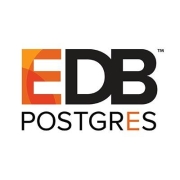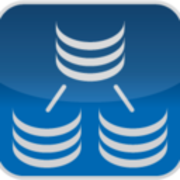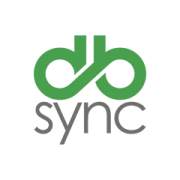Data Replication is the process of copying data from one location to another, ensuring consistency and reliability across distributed systems. It improves data availability and supports real-time data access while mitigating risks associated with data loss.
This technology is crucial for maintaining data integrity and availability in decentralized architectures. Organizations use Data Replication to enhance system performance, balance workloads, and achieve seamless data integration across platforms. It plays a significant role in backup and disaster recovery strategies, allowing businesses to quickly recover from outages and minimize downtime.
What features should you consider in Data Replication solutions?In the healthcare industry, Data Replication supports quick access to patient records across multiple facilities, enhancing the quality of care. In financial services, it ensures transaction data is consistently updated across global branches, maintaining accurate records and compliance.
This practice is essential for organizations seeking to maintain continuous data access and system reliability. It supports business continuity efforts by safeguarding against data loss and ensuring that critical operations can proceed without interruption.







































Data replication can work in two ways: either the creation of a single copy of the existing data, or a continuous process. If data is replicated once, then the process simply ends there. However, the most common type of data replication is ongoing replication, which allows for the updates of the copies as the original changes.
Data is most often stored by being distributed among various different systems. Within the various systems, data gets separated into fragments and each fragment is stored on a different node. How data replication works is by gathering these fragments that are spread out in different places and making a replica of them that is then sent to a different server. Thus, a user can ensure not only that their data is secured and that if a fragment on the original fails, there will be a copy of it, but that a replica will be available to other users who may use different sources to access the data.
There are different types of data replication, including:
In order to replicate data, users may rely on a variety of data replication software, specialized for their needs and for the type of replication that they want to perform.
Data replication software is the software used to create different types of replicas of data. Depending on the software users select, they can also benefit from additional functions other than just a copy: there can be options for recovery in a state of emergency and various types of sharing options, as well as continuous data protection.
A company could have their own data replication software or the database they use might have replication tools. It is also possible to use third-party software. Many data replication software offerings are compatible with several databases at the same time, which gives users the opportunity to use their solutions across various databases.
Data replication and data backup may sound similar, but this is a common misconception. While, in an emergency, data replication could serve as a backup, this is not its main purpose.
The backup of data is the creation of a copy of it and then transferring the copy to a completely different source, to ensure that a current copy of the data exists and that if something happens to the main server where the original is stored, it will be possible to recover the losses. Data backup can be done during various stages, including at regular backup times or while the data is being worked with, in order to ensure that a permanent copy of it is saved in a separate place and can be accessed there if necessary.
Through data replication, on the other hand, data is copied and then moved between servers and different storage places, allowing users to access the same constantly-updating replicas of the data through their devices all at the same time. While replicated data can serve as a backup option as well, the purpose of data replication is not to provide a secure copy, but rather to distribute the data across a company, allowing different servers to store and access the information.
The prompt recovery of current data is possible through replication because the replica is updated simultaneously with the original. In contrast, data backup offers a static copy of some version of the original, stored somewhere where nothing can affect it. The two processes serve different needs and can be performed without affecting each other. If a company wants to secure its data while providing it in different locations, then it can benefit from both backup and replication, to ensure both the full protection and accessibility of its information. Different data replication software services also allow for varieties of backups for replicated data.
When implementing Data Replication solutions, start by identifying your specific data needs and choose a replication strategy that aligns with your business goals. Evaluate network bandwidth and ensure it supports the load of data transfer. Ensure consistency and data integrity at all times. Use automation tools to simplify processes and reduce the potential for human error. Monitor the replication process continually to detect and address any issues promptly.
How can Data Replication improve decision-making in organizations?Data Replication ensures that accurate and consistent data is readily available across different locations. This availability improves decision-making by providing the most up-to-date information, which leads to better strategic planning. Access to real-time data enables quick responses to market changes and customer needs. Additionally, it supports business continuity, ensuring decisions are made with non-disrupted data flows.
What challenges might you face with Data Replication in cloud environments?In cloud environments, Data Replication can present challenges such as latency issues due to geographic data distribution. Maintaining data consistency across different cloud vendors and regions requires careful management. Security is also a concern, with the need to encrypt data both in transit and at rest. Understanding the cost implications of data transfer between services is crucial to optimize expenses. It's important to select cloud services that support your Data Replication needs effectively.
How does Data Replication support disaster recovery strategies?Data Replication plays a crucial role in disaster recovery by ensuring that data is consistently duplicated and available in multiple locations. This redundancy protects against data loss during outages, as you can quickly failover to a replicated site. Replication facilitates rapid data restoration, minimizing downtime and ensuring business continuity. Establishing a robust replication process aligns with recovery time objectives and recovery point objectives for effective disaster recovery planning.
Can Data Replication improve application performance and how?Yes, Data Replication can significantly enhance application performance by distributing the data load across multiple sites. This distribution allows users to access data from the nearest location, reducing latency and improving response times. Additionally, replication offers increased availability and redundancy, as applications can continue to function even if one data source fails. Properly managed replication reduces the strain on individual database servers, balancing the workload more effectively.